What Type of Flooring Should You Choose for Your Home?
Choosing the right flooring for your home is a significant decision. Your floors not only enhance the aesthetic value of your interior but also need to withstand daily wear and tear from household members, pets, and guests.
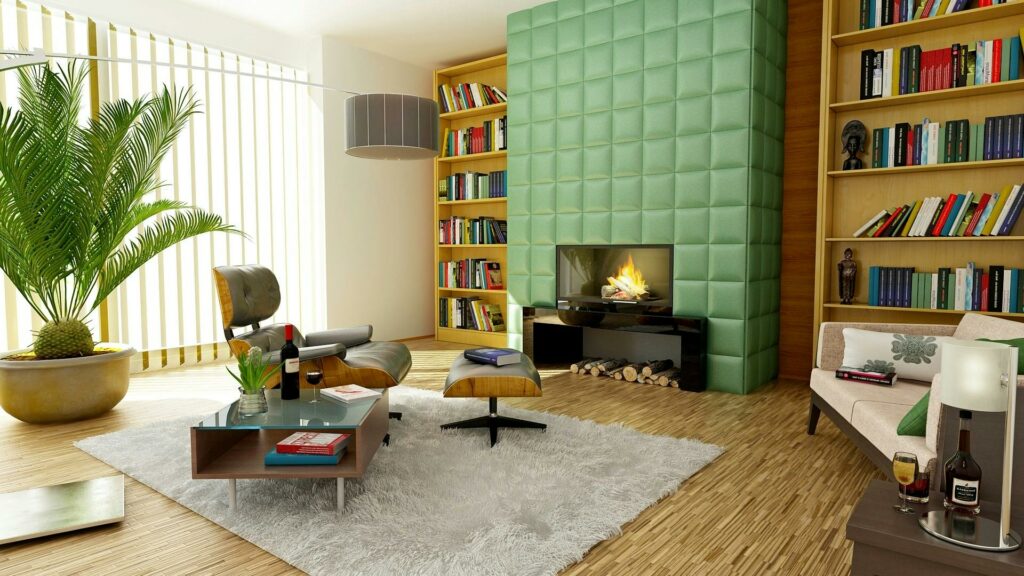
Factors to Consider Before Buying New Floor Coverings
When selecting your flooring, consider the following factors:
1. Style Preference
Your flooring should reflect your personality and style. Ensure that it complements the overall look and feel of the room where it will be installed. Cohesive design enhances the visual appeal of your home.
2. Household Lifestyle
Do you have pets? How many kids do you have? For an active household, choose flooring that is scratch-resistant and spill-proof. Durable flooring options can handle the demands of a busy home.
3. Budget
As the old adage goes: “Live within your means.” Only purchase floors that you can afford to install and maintain over time. Budget-friendly options can still offer durability and style.
Flooring Materials to Choose From
Here are the most common flooring materials available:
1. Hardwood Timber Flooring
Known for its timeless appeal and durability, hardwood flooring adds warmth and elegance to any room. It’s a great choice for living rooms and bedrooms.
2. Laminate Flooring
Laminate flooring is a cost-effective alternative to hardwood. It’s durable, scratch-resistant, and easy to maintain, making it ideal for high-traffic areas.
3. Vinyl Flooring
Vinyl flooring is highly versatile and water-resistant, perfect for kitchens and bathrooms. It comes in various designs, including those that mimic hardwood and stone.
4. Tile Flooring
Tiles are durable and come in a wide range of styles and colors. They are an excellent choice for bathrooms, kitchens, and entryways due to their water resistance.
5. Carpet Flooring
Carpet adds comfort and warmth, making it a popular choice for bedrooms and living rooms. It’s available in various textures and colors to match any decor.
6. Engineered Wood Flooring
Engineered wood offers the beauty of hardwood with added stability. It’s less susceptible to moisture and temperature changes, suitable for any room in your home.
7. Hybrid Flooring
Hybrid flooring is a robust and waterproof option that combines the best characteristics of hardwood, vinyl, and laminate floors. It is highly durable, stylish, and affordable, making it suitable for any area, including kitchens and bathrooms.
Timber floors, the proven timeless option.
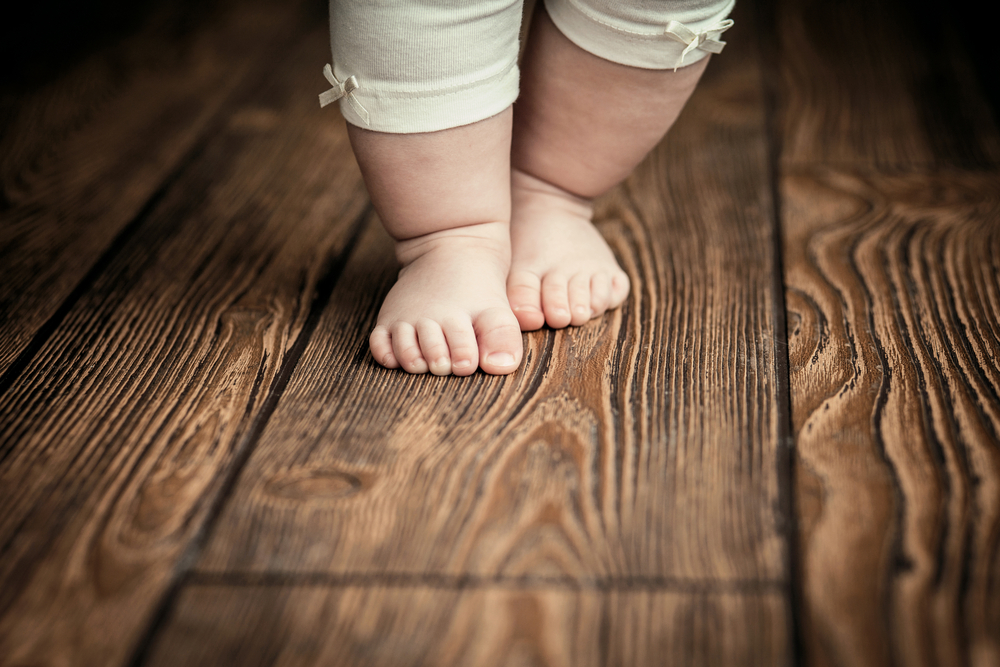
Timber floors are renowned for their durability and elegant appeal. While they are one of the priciest flooring options and can be expensive to repair, their long-term benefits often justify the initial investment. If you’re building a new home or renovating your current one in Australia, timber flooring is an option worth considering.
Benefits of Timber Flooring
Here are six key benefits of choosing wood or timber flooring:
1. Easy Maintenance
Timber floors are preferred for their ease of maintenance. Simply dust and mop them periodically to keep them looking pristine. Their low maintenance requirements make them a practical choice for busy households.
2. Sustainability
Wooden floors have a much longer lifespan compared to other types of flooring. They are resistant to frost, heat, corrosion, and pollution, making them a durable and sustainable option.
3. Environmentally Friendly
Timber is a natural material sourced from trees, making it an eco-friendly choice. Unlike industry-produced materials, wood decays organically when disposed of, reducing environmental impact.
4. Versatility
Engineered wood is a popular choice today due to its versatility. Timber flooring comes in a wide selection of colors and styles, allowing you to customize your floors to match any decor.
5. Improved Air Quality
Many people are unaware that wooden floors can improve indoor air quality. Unlike carpets, timber floors do not trap dust, allergens, or pet dander, making them an excellent choice for allergy sufferers.
6. Cost-Effective in the Long Run
Although timber flooring may seem expensive initially, it proves to be cost-effective over time. Its durability and low maintenance needs mean fewer replacements and repairs, saving you money in the long run.
Timber floors can transform your house into a warm, inviting home. They come in a variety of styles and colors, enhancing your interior design while increasing your property value.
Laminate Flooring: An Easy and Versatile Solution

A popular alternative to hardwood, laminate flooring mimics the colors and styles of natural wood. It’s easy to install and economical, though it is more susceptible to moisture damage. In recent years, laminate floors have gained popularity due to their practicality and affordability. Many people prefer laminate flooring for its DIY installation, which significantly reduces labor costs.
Benefits of Laminate Flooring
Here are the advantages of choosing laminate flooring for your home renovation:
1. Durability
Laminate flooring is known for its strength and scratch resistance. It features a tough external layer and a resin coating, making it a highly durable flooring option that can withstand heavy foot traffic.
2. Versatility
Laminate floors offer a realistic wooden or stone-like appearance. They come in a wide variety of designs and colors, allowing you to choose the perfect look to match your home’s decor.
3. Easy Installation
Laminate flooring is easier to install compared to other flooring options. Most laminates come in a click-to-lock floating floor system, making it ideal for DIY installation and saving on professional labor costs.
4. Affordable Price
Laminate flooring is significantly less expensive than real wood floors. If you’re on a budget, laminate is an excellent choice, providing a stylish look without breaking the bank.
5. Compatibility with Subfloors
Laminate flooring is versatile enough to be installed over various types of subfloors, including concrete and old vinyl floors. This flexibility makes it a convenient option for many homeowners.
6. Variety of Styles
You can find laminate flooring that mimics a wide range of materials, such as stone or wood. It is available in numerous styles, ensuring that you can find the perfect match for your home.
7. Easy Maintenance
Laminate floors are stain and moisture-resistant, making them easy to clean. You won’t need special cleaners to maintain them, which adds to their practicality and convenience.
Vinyl Planks and Linoleum Sheets Flooring
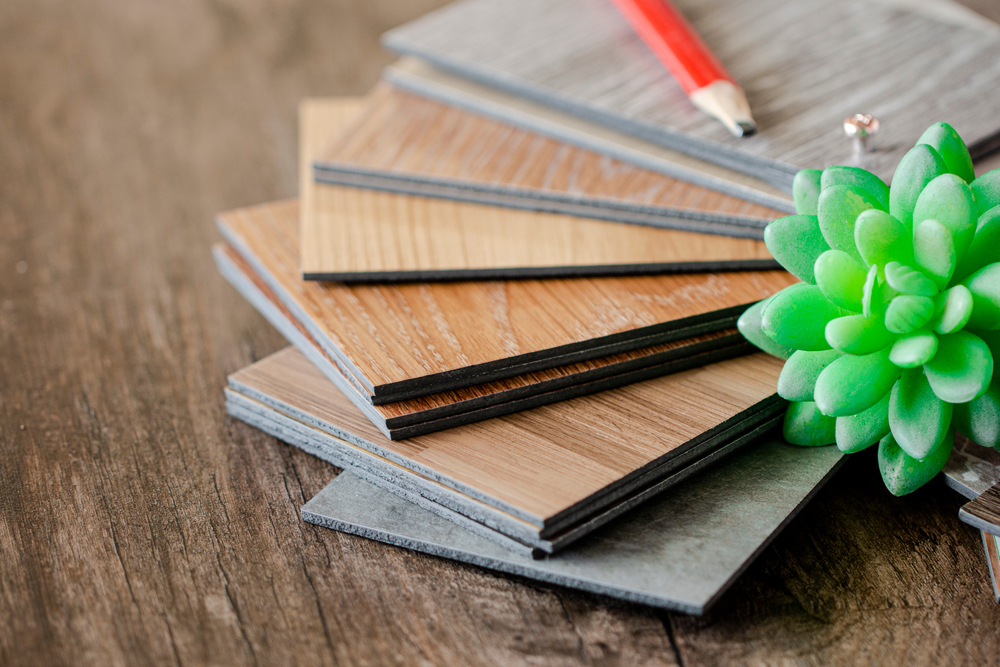
Vinyl Plank Flooring: Easy to Maintain
Vinyl plank flooring is a competitively priced option, sought after for its versatility and ease of maintenance. It’s especially suitable for high-traffic areas in your home. Nowadays, vinyl flooring has become a popular choice due to its numerous advantages.
Benefits of Vinyl Plank Flooring
Here are some benefits of choosing vinyl plank flooring:
1. Realistic and Beautiful Designs
Vinyl flooring comes in a variety of beautiful designs and can even mimic the appearance of natural wood, providing a stylish look without the high cost.
2. Comfort Underfoot
Vinyl plank flooring is soft and comfortable to walk on, even during cold months. It provides a cushioned feel, making it gentle on your feet.
3. Family Safety
Vinyl flooring is not very slippery, reducing the risk of falls even when the floor is wet. This makes it a safe choice for households with children and elderly family members.
4. Easy Installation and Maintenance
Vinyl flooring is a favorite among DIY enthusiasts due to its easy installation. It requires minimal maintenance, making it a convenient flooring option.
5. Versatility
Vinyl flooring can be installed in almost any room, including wet areas like bathrooms and kitchens. Its water-resistant properties make it an ideal choice for these spaces.
6. Durability
Vinyl plank flooring is highly durable. Once installed, it can last for at least 20 years, providing a long-term flooring solution.
7. Cost-Effective
Vinyl flooring is one of the most affordable flooring options available. It offers a budget-friendly alternative to more expensive materials.
8. Stylish and Versatile
With its versatility and wide range of styles, vinyl flooring can complement any type of decor. You can find options that match your home’s aesthetic perfectly.
9. Water-Resistant
Vinyl flooring is moisture-resistant, making it suitable for bathrooms and kitchens where spills and splashes are common.
10. Allergy-Friendly
Vinyl floors are hypoallergenic, with few seams where allergens, dust mites, mold, or bacteria can hide. This makes it a healthy choice for allergy sufferers.
If you can’t afford wooden floors, vinyl flooring offers a stylish and cost-effective alternative.
Linoleum vs. Vinyl Sheets Flooring: Water-Resistant and Hygienic Options
Linoleum and vinyl are two different types of flooring materials with several similar characteristics, often leading to their names being used interchangeably. However, there are distinct differences between them. Let’s compare these two materials based on several key parameters.
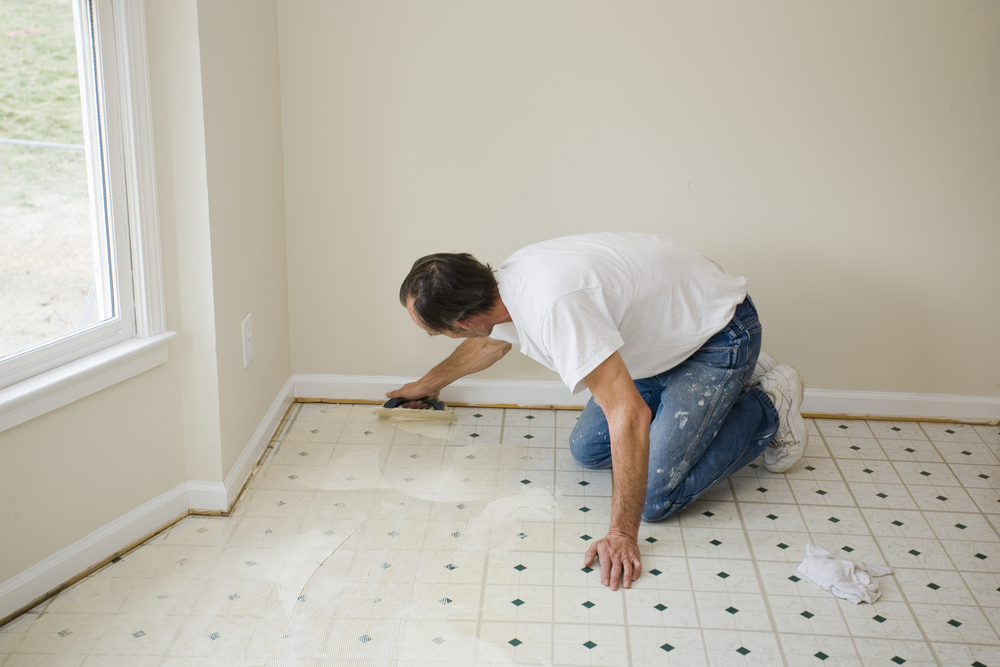
Benefits of Vinyl Flooring
1. Water Resistance
Vinyl flooring is a safe option for wet areas like bathrooms and kitchens due to its superior water resistance. Linoleum is less effective in these environments.
2. Maintenance and Upkeep
Vinyl flooring requires very little maintenance and is resistant to scratches. Linoleum, however, is more susceptible to scratches and requires more frequent upkeep.
3. DIY Installation
Vinyl flooring is easy to install, making it a popular choice for DIY projects. Linoleum is stiffer and more challenging to work with, especially in tight areas.
4. Durability
Linoleum is more durable than vinyl, with a lifespan of up to 40 years compared to vinyl’s 10-year lifespan. However, vinyl is a cheaper alternative.
5. Cost
Vinyl is a more cost-effective material compared to linoleum, which is relatively more expensive.
6. Resale Value
Homes with linoleum flooring may have a better resale value compared to those with vinyl flooring, as linoleum is considered a higher-end material.
Porcelain or Ceramic Tile Floors: Durable and Waterproof

Though challenging to install, porcelain and ceramic tiles are highly durable and waterproof, making them ideal for kitchens and bathrooms. These tiles are available in a wide range of designs, adding a stylish touch to any room.
Porcelain Tile Flooring
Porcelain tiles are known for their stylish look and versatility. They are used for decorating both walls and floors, but porcelain floor tiles are typically heavier, thicker, and more robust than wall tiles. These tiles can be used both indoors and outdoors, commonly found in swimming pools and patios.
Porcelain tiles are generally preferred over ceramic tiles due to their superior hardness and strength. The process of firing and pressing raw materials results in tiles with much lower water absorption rates.
Pros and Cons of Porcelain Floor Tiles
Pros:
1. Variety of Design Options
Porcelain tiles come in numerous designs, mimicking stone, wood, and other materials, offering great aesthetic flexibility.
2. High Durability
Porcelain tiles are incredibly durable, withstanding heavy foot traffic and lasting for decades.
3. Water and Stain Resistance
These tiles are highly resistant to water and stains, making them ideal for moisture-prone areas like kitchens and bathrooms.
4. Low Maintenance
Porcelain tiles require minimal maintenance, retaining their appearance with regular cleaning.
Cons:
1. High Cost
Porcelain tiles are generally more expensive compared to other flooring options.
2. Brittleness and Weight
Porcelain tiles can be brittle and heavy, making them challenging to handle and install. They can also be slippery when wet.
3. Difficult Installation
Installing porcelain tiles can be difficult, often requiring professional help. The tiles need careful handling, and the grout may require sealing.
4. Need for Sealing Grout
The grout used with porcelain tiles often needs sealing to prevent stains and moisture absorption.
Is Porcelain Tile Flooring Right for You?
If you desire the performance benefits of ceramic tiles in a product that effectively mimics stone, wood, and other flooring materials, porcelain floor tiles are an excellent choice. While DIY installation might be challenging, it is achievable if you have experience with ceramic tiles. The result will be a long-lasting, attractive floor that can enhance the beauty of your home for decades.
Carpet: For Cosiness and Comfort

Carpets are renowned for the warmth and protection they provide. While they are among the most budget-friendly flooring options, carpets do require more frequent cleaning and maintenance compared to other types of flooring. When renovating your home, updating the flooring can make a significant impact. With many options available, choosing the right carpet can be a daunting task. Understanding the benefits of carpet flooring can help you make an informed decision.
Benefits of Carpet Flooring
Here are some appealing benefits of installing carpet in your home:
1. Style
Whether you desire a luxurious, sophisticated look or a welcoming, warm ambiance, carpets are available in a wide variety of styles. You can find carpets in virtually any color or pattern, and choose from plush, twist, and loop pile carpeting options to add uniqueness and style to each room.
2. Affordability
Carpet offers a unique combination of style and affordability. Compared to other flooring options such as vinyl or hardwood, carpet is cost-effective. You can easily find high-quality carpet that suits your budget.
3. Warmth and Coziness
One of the major advantages of carpeting is the comfort and warmth it provides. Carpets are soft underfoot and offer good shock absorption and flexibility. Thicker carpets provide excellent insulation, keeping your home warm and cozy.
4. Safety
Hard surfaces can be slippery and are not safe to fall on. Carpets provide a safer option, especially for homes with elderly people or children. Many homeowners prefer carpeting on stairs and in high-traffic areas for added safety.
5. Quietness
Carpeted rooms are significantly quieter. Carpets absorb sound, preventing it from bouncing off the floor or echoing from the walls, creating a peaceful and quiet environment.
If you are convinced by these advantages, you can look for a reputable carpet supplier in your city and have it installed with ease.
Engineered Wood Flooring: The Perfect Blend of Beauty and Stability
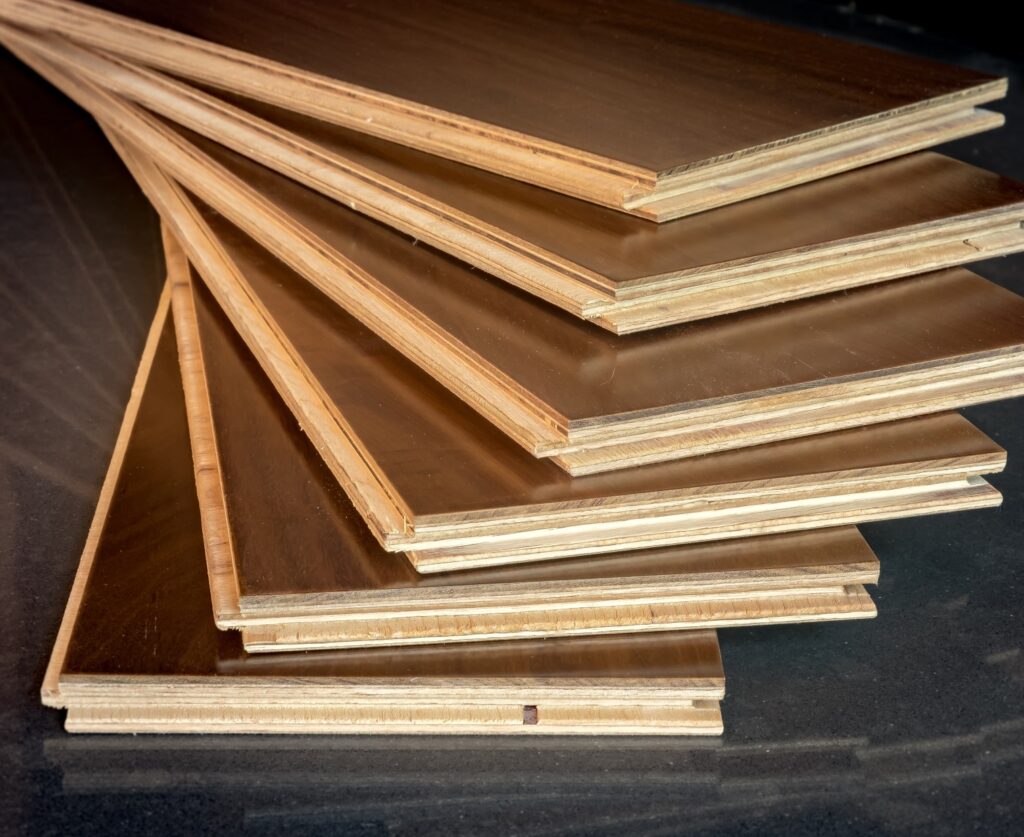
Engineered wood flooring offers the timeless beauty of hardwood with enhanced stability, making it an excellent choice for any room in your home. Its construction makes it less susceptible to moisture and temperature changes, providing the elegance of real wood with added durability.
What is Engineered Wood Flooring?
Engineered wood flooring is composed of multiple layers of wood bonded together. The top layer, known as the veneer, is made of real hardwood, giving it the same appearance as solid wood flooring. The core layers underneath are made of plywood or high-density fiberboard (HDF), providing stability and resistance to moisture and temperature fluctuations.
Benefits of Engineered Wood Flooring
1. Natural Beauty
Engineered wood flooring offers the same luxurious appearance as solid hardwood. The top veneer layer showcases the natural grain and beauty of real wood.
2. Enhanced Stability
The multi-layer construction of engineered wood provides greater stability compared to solid wood. It resists warping, expanding, and contracting with changes in humidity and temperature.
3. Versatility
Engineered wood can be installed in a variety of rooms, including basements and kitchens, where solid wood might not be suitable due to moisture concerns.
4. Easy Installation
Engineered wood flooring often features a click-lock installation system, making it easier and quicker to install than traditional solid wood flooring. It can be installed as a floating floor or glued down, depending on your preference.
5. Eco-Friendly
Using engineered wood helps conserve hardwood resources as it uses less of the valuable hardwood for the top veneer layer and more sustainable materials for the core layers.
6. Durability
Engineered wood is highly durable and can withstand high foot traffic. Its construction allows it to perform well in areas where solid wood might struggle.
7. Cost-Effective
Engineered wood flooring is often more affordable than solid hardwood, providing the same aesthetic appeal at a lower cost.
8. Low Maintenance
Engineered wood is easy to clean and maintain. Regular sweeping and occasional damp mopping are usually sufficient to keep it looking beautiful.
9. Refinishing Options
Some engineered wood floors can be refinished, depending on the thickness of the top veneer layer. This allows you to renew the floor’s appearance if it becomes worn over time.
10. Wide Range of Styles
Engineered wood flooring is available in various wood species, finishes, and plank sizes, offering a wide range of options to match your home’s decor.
Hybrid Flooring: A Robust and Waterproof Option
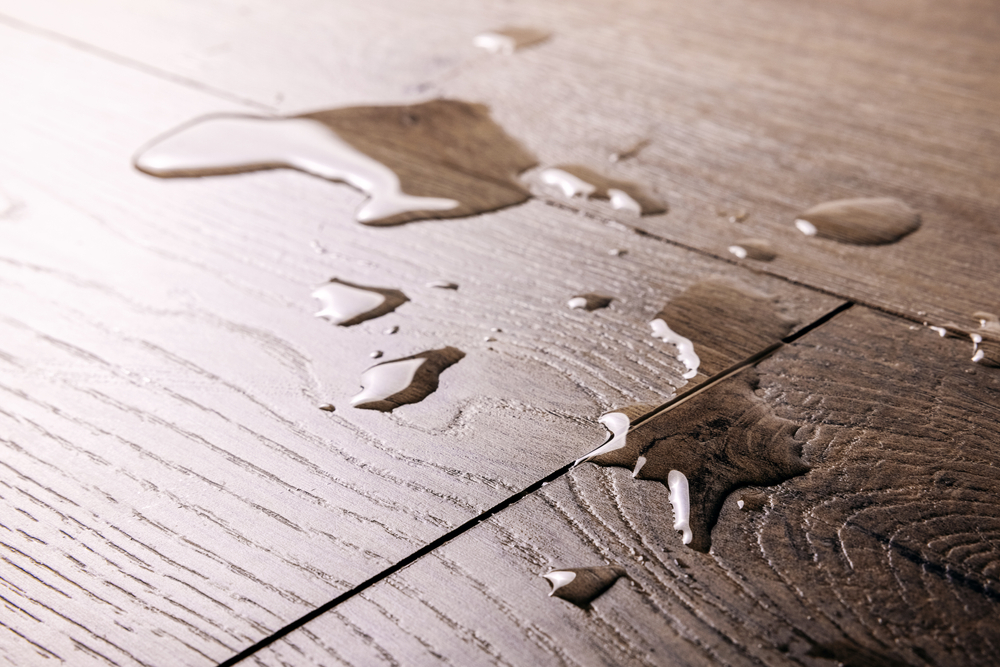
Hybrid flooring is highly durable, affordable, stylish, and 100% waterproof. Although hybrid flooring doesn’t use real wood, modern technologies have made it possible to produce hybrid materials that combine the best characteristics of hardwood, vinyl, and laminate floors. Available in various designs and styles, hybrid flooring offers a versatile and practical solution for any home.
What is Hybrid Flooring?
Hybrid flooring is composed of a decorative and textured print layer sandwiched between a rigid, waterproof core board and a protective top coating. Additional acoustic layers help reduce noise transmission, eliminating the need for extra underlayment.
Benefits of Hybrid Flooring
1. Affordability
Hybrid flooring is available at an affordable cost due to its composite construction.
2. Style
Advanced printing technology allows for a wide variety of designs and styles, mimicking the appearance of natural materials like wood and stone.
3. Waterproof
Hybrid floors are 100% waterproof, making them ideal for kitchens, bathrooms, and other moisture-prone areas.
4. Heat Resistance
Infused with plastic and limestone, hybrid floors offer high heat resistance, maintaining their integrity even in warmer conditions.
5. Durability
Hybrid flooring is suitable for homes with pets, high foot traffic, and children due to its robust construction.
6. Low Maintenance
The click-lock installation system prevents dust from entering, making hybrid floors easy to clean and maintain.
7. Comfort
Hybrid floors provide a comfortable underfoot feel, making them pleasant to walk on.
8. Fade Resistance
Special technology ensures that hybrid floors maintain their color longer, resisting fading from sunlight.
9. Easy Installation and Repair
Hybrid floors are easy to install and repair, making them a convenient choice for DIY enthusiasts.
10. Warranty
Manufacturers typically offer a 20-year warranty, giving you peace of mind and ensuring the longevity of your hybrid flooring.
Installation Types and Difficulty Levels

Installation Types and Difficulty Levels, Including Floor Preparation and Leveling
Choosing the right flooring involves considering not just its appearance and durability but also the installation process. Here’s a comprehensive breakdown of installation types and difficulty levels for different flooring options, including the crucial aspect of floor preparation and leveling:
-
Hardwood Timber Flooring
- Installation Types: Hardwood flooring is typically installed using nails or staples, either directly onto a plywood subfloor or as a floating floor over an underlayment.
- Difficulty Level: Moderate to difficult. Installing solid hardwood requires precise measurements, acclimation to the room’s humidity, and careful nailing or stapling to avoid damage. Engineered hardwood, with its tongue-and-groove or click-lock systems, is easier to install and can be done as a DIY project with some skill.
- Floor Preparation: Subfloor must be clean, dry, and flat. Any imperfections in the subfloor should be corrected to prevent issues with the hardwood planks.
-
Laminate Flooring
- Installation Types: Laminate flooring often features a click-lock system for floating installation. Some types can be glued down depending on the subfloor and manufacturer’s recommendations.
- Difficulty Level: Easy to moderate. Laminate flooring is designed with DIY installation in mind, thanks to its simple click-lock mechanism. It requires basic tools such as a saw, tapping block, and spacers. Glue-down installations may require more expertise and precision to ensure proper adhesion.
- Floor Preparation: Subfloor should be clean, level, and dry. Uneven areas must be leveled, and moisture levels should be checked to prevent warping or buckling of the laminate planks.
-
Vinyl Flooring
- Installation Types: Vinyl flooring comes in various installation methods: loose-lay, glue-down, or click-lock floating floors.
- Difficulty Level: Easy to moderate. Click-lock vinyl planks are user-friendly and suitable for DIY installation. Loose-lay and glue-down methods require careful preparation of the subfloor to ensure a smooth surface and proper adhesion. Glue-down vinyl may be more challenging due to the need for precise application of adhesive.
- Floor Preparation: Subfloor must be clean, smooth, and free of debris. Imperfections should be patched, and moisture levels should be within acceptable limits to prevent issues with vinyl adhesion.
-
Tile Flooring
- Installation Types: Tiles are typically installed using thin-set mortar over a cement board or other suitable underlayment. Grout is applied between tiles to secure them.
- Difficulty Level: Moderate to difficult. Tile installation demands meticulous planning, precise cutting of tiles, and skillful application of mortar and grout. It requires specialized tools such as a notched trowel, tile cutter, and grout float. Proper subfloor preparation is crucial to prevent cracking and ensure long-term durability.
- Floor Preparation: Subfloor must be stable, flat, and capable of supporting the weight of tiles and mortar. Cement board or other appropriate underlayment should be securely installed to create a solid base for tile installation.
-
Carpet Flooring
- Installation Types: Carpet is installed by stretching it over a padded underlay and securing it with tack strips or adhesives.
- Difficulty Level: Moderate. Carpet installation requires careful measurement and cutting to fit the room’s dimensions precisely. Professional installers use specialized tools like a knee kicker and power stretcher to achieve a smooth, wrinkle-free finish. DIY carpet installation is possible with proper tools and techniques, but achieving professional results may be challenging.
- Floor Preparation: Subfloor should be clean, smooth, and free of debris. Padding should be evenly installed to provide proper cushioning and support for the carpet. Tack strips or adhesive should be securely placed around the perimeter for proper carpet stretching and installation.
-
Engineered Wood Flooring
- Installation Types: Engineered wood flooring can be installed as a floating floor using a click-lock system or glued down directly to the subfloor.
- Difficulty Level: Moderate. Floating installation with a click-lock system is suitable for DIYers, requiring basic tools like a saw and tapping block. Glue-down installation demands precision in adhesive application and plank alignment. Proper subfloor preparation is essential to prevent moisture issues and ensure a stable installation.
- Floor Preparation: Subfloor must be clean, dry, and flat. Any uneven areas should be leveled, and moisture levels should be checked and addressed as needed. A moisture barrier may be required for glue-down installations to prevent moisture damage to the engineered wood planks.
-
Hybrid Flooring
- Installation Types: Hybrid flooring is predominantly installed as a floating floor using a click-lock system, similar to laminate and engineered wood. It can also be glued down.
- Difficulty Level: Easy to moderate. Hybrid flooring is designed for straightforward installation with its click-lock mechanism, making it suitable for DIYers. It requires minimal tools and preparation. Like other floating floors, proper subfloor leveling and moisture barrier installation are crucial for a successful installation.
- Floor Preparation: Subfloor should be clean, dry, and level. Minor imperfections should be corrected to ensure a smooth installation surface. A moisture barrier may be recommended depending on the specific hybrid flooring product and installation method.
Estimating Price Guidelines for Different Flooring Types

Cost Considerations
When selecting flooring for your home, cost is a significant factor that influences both your initial investment and long-term maintenance expenses. Here’s a breakdown of cost ranges for materials and installation, along with considerations for long-term cost benefits across various flooring types:
-
Hardwood Timber Flooring
- Material Cost: Hardwood flooring prices vary widely based on the species of wood and quality. On average, expect to pay between $5 to $15 per square foot for materials.
- Installation Cost: Installation can range from $4 to $8 per square foot, depending on factors like subfloor condition and complexity.
- Long-Term Benefits: Hardwood floors add value to your home and can last for decades with proper care. They may require periodic refinishing to maintain their appearance, adding to long-term maintenance costs.
-
Laminate Flooring
- Material Cost: Laminate flooring is a cost-effective alternative, typically ranging from $1 to $4 per square foot.
- Installation Cost: Installation costs range from $2 to $5 per square foot. DIY installation can save on labor costs.
- Long-Term Benefits: Laminate floors are durable and easy to clean, reducing maintenance costs over time. They are less susceptible to scratches and moisture damage compared to hardwood.
-
Vinyl Flooring
- Material Cost: Vinyl flooring prices range from $1 to $5 per square foot, depending on quality and design.
- Installation Cost: Installation costs vary but generally range from $1.50 to $4 per square foot. Glue-down vinyl may incur higher installation costs.
- Long-Term Benefits: Vinyl floors are highly durable and water-resistant, making them ideal for kitchens and bathrooms. They require minimal maintenance and are less prone to staining and scratching.
-
Tile Flooring
- Material Cost: Tile prices vary widely based on material (ceramic, porcelain, natural stone) and design, averaging between $2 to $15 per square foot.
- Installation Cost: Installation costs range from $5 to $10 per square foot, depending on tile type and complexity. Professional installation is recommended for optimal results.
- Long-Term Benefits: Tile floors are exceptionally durable and easy to maintain. They offer excellent water resistance and can withstand heavy foot traffic without wearing down, making them a cost-effective long-term investment.
-
Carpet Flooring
- Material Cost: Carpet prices range from $2 to $10 per square foot, depending on fiber type (e.g., nylon, polyester, wool) and pile thickness.
- Installation Cost: Installation costs vary but generally range from $1.50 to $3 per square foot. Professional installation ensures proper stretching and seam sealing.
- Long-Term Benefits: Carpet provides warmth and comfort, but maintenance costs can be higher due to regular vacuuming and occasional deep cleaning. Quality carpeting can last for many years with proper care.
-
Engineered Wood Flooring
- Material Cost: Engineered wood prices range from $3 to $10 per square foot, depending on wood species and quality.
- Installation Cost: Installation costs range from $4 to $8 per square foot, similar to solid hardwood. Floating installation may be cheaper if DIY.
- Long-Term Benefits: Engineered wood offers the aesthetic appeal of hardwood with enhanced stability against moisture and temperature changes. It requires less maintenance than solid hardwood and can last for decades.
-
Hybrid Flooring
- Material Cost: Hybrid flooring prices range from $2 to $6 per square foot, depending on quality and design.
- Installation Cost: Installation costs range from $2 to $5 per square foot, with DIY options available due to click-lock systems.
- Long-Term Benefits: Hybrid floors combine the durability of laminate with the waterproof properties of vinyl. They offer cost savings over traditional hardwood while providing easy maintenance and long-lasting performance.
Comparing Long-Term Cost Benefits
- Durability and Maintenance: Hardwood, tile, and vinyl are known for their durability, requiring less frequent replacement compared to carpet or laminate.
- Maintenance Costs: Carpet and hardwood may require more frequent maintenance (e.g., refinishing, cleaning), whereas vinyl and laminate are easier to clean and maintain.
- Resale Value: Hardwood and tile flooring generally increase home resale value more than carpet or laminate.
- Environmental Impact: Consider eco-friendly options like bamboo (not listed above) or sustainable hardwoods for long-term sustainability.
Frequently Asked Questions (FAQ) About Flooring Choices
Choosing the right flooring for your home involves considering various factors such as durability, maintenance, cost, and aesthetic appeal. Here are some common questions and answers to help you navigate your flooring decisions:
1. What flooring is best for high-traffic areas?
- Answer: Tile, laminate, vinyl, and certain types of hardwood (like engineered wood) are excellent choices for high-traffic areas due to their durability and ease of maintenance.
2. What flooring is best for kitchens and bathrooms?
- Answer: Vinyl and tile flooring are highly recommended for kitchens and bathrooms due to their water resistance and ease of cleaning. Engineered wood and laminate can also be suitable with proper precautions against moisture.
3. How do I choose between carpet and hard flooring?
- Answer: Consider the room’s function, traffic levels, and desired aesthetic. Carpet offers comfort and warmth, while hard flooring (hardwood, laminate, tile) is easier to clean and may be more durable in the long run.
4. What is the most cost-effective flooring option?
- Answer: Laminate and vinyl flooring are generally the most cost-effective options, offering durability and easy maintenance at a lower price point compared to hardwood or tile.
5. Are there eco-friendly flooring options available?
- Answer: Yes, bamboo, cork, and certain types of hardwood sourced from sustainable forests are eco-friendly options. Additionally, some vinyl and carpet manufacturers offer products made from recycled materials.
6. Can I install flooring myself, or should I hire a professional?
- Answer: DIY installation is feasible for some flooring types like laminate, vinyl planks, and certain engineered wood options with click-lock systems. However, complex installations or specific subfloor requirements may require professional installation to ensure durability and warranty compliance.
7. How do I maintain different types of flooring?
- Answer: Maintenance varies by flooring type:
- Hardwood: Regular cleaning and occasional refinishing.
- Tile: Routine sweeping and mopping; grout cleaning as needed.
- Vinyl/Laminate: Regular sweeping or vacuuming; occasional mopping with a damp cloth.
- Carpet: Regular vacuuming; periodic deep cleaning.
8. Will my choice of flooring affect my home’s resale value?
- Answer: Yes, flooring choice can impact resale value. Hardwood and tile generally add more value compared to carpet or laminate. Consider choosing timeless styles and quality materials for best resale potential.
9. What should I consider when choosing flooring for allergy sufferers?
- Answer: Opt for hard flooring surfaces like tile, laminate, or vinyl, which are easier to clean and less likely to harbor allergens compared to carpet. Ensure proper cleaning routines to maintain air quality.
10. How do I ensure my chosen flooring meets safety standards?
- Answer: Choose flooring products certified for low VOC emissions to ensure indoor air quality. For areas prone to slips, opt for flooring with slip-resistant features or add rugs with non-slip pads.
Final Thoughts on Choosing the Right Flooring for Your Home
Selecting the perfect flooring for your home is not just about enhancing its appearance but also about ensuring practicality and long-term value. Each type of flooring, from the timeless elegance of hardwood to the modern convenience of vinyl and hybrid options, offers unique benefits tailored to different lifestyles and needs.
Consider factors such as durability, maintenance requirements, installation complexity, and budget when making your decision. Hardwood and tile may provide enduring beauty and increased home value, while laminate and vinyl offer cost-effective solutions with easy upkeep. Carpet, on the other hand, provides warmth and comfort but requires regular maintenance.
Whether you prioritize sustainability, durability, or affordability, there’s a flooring option that aligns with your preferences. Consult with flooring experts, explore various samples, and weigh the pros and cons before making your final choice. Investing in quality flooring not only enhances your living space but also contributes to its functionality and aesthetic appeal for years to come.
Explore our comprehensive guide to flooring types to discover the ideal fit for your home. For personalized advice or further assistance, contact flooring professionals who can provide insights and ensure a seamless installation process. Choose wisely to create a home environment that reflects your style and meets your practical needs effortlessly.
